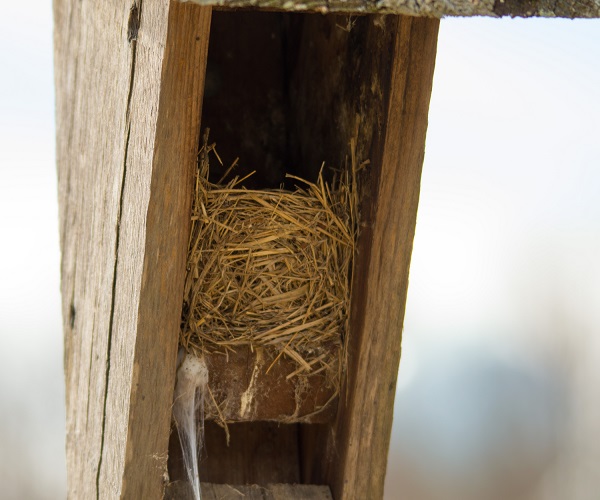Methods
Nestboxes can be found all over SERC’s campus, around farm fields, by the forest’s edge, and in small gardens. Once a week, volunteers carefully check each of 48 boxes to see who’s been living there. We don’t want to scare birds by sneaking up on their nests, so we knock on the side of the boxes first to allow mothers to fly away. When the box is opened, volunteers take note of what they find, from nests to eggs to insects that are living in the boxes. Different birds can be identified by the materials that the nests are made of and the color of the eggs.


Chickadee nests are made of green plant material, like moss, while bluebirds create nests from dried grasses. Bluebird eggs are usually sky blue, and in rare cases they are white. Chickadee eggs are white and speckled. Sometimes, an overabundance of insects, such as ants or wasps, can make a nestbox an undesirable home for our birds, so volunteers safely remove what they can. It would take a long time for one person to monitor the whole trail each week, so data collection is typically split among 2-3 people.

